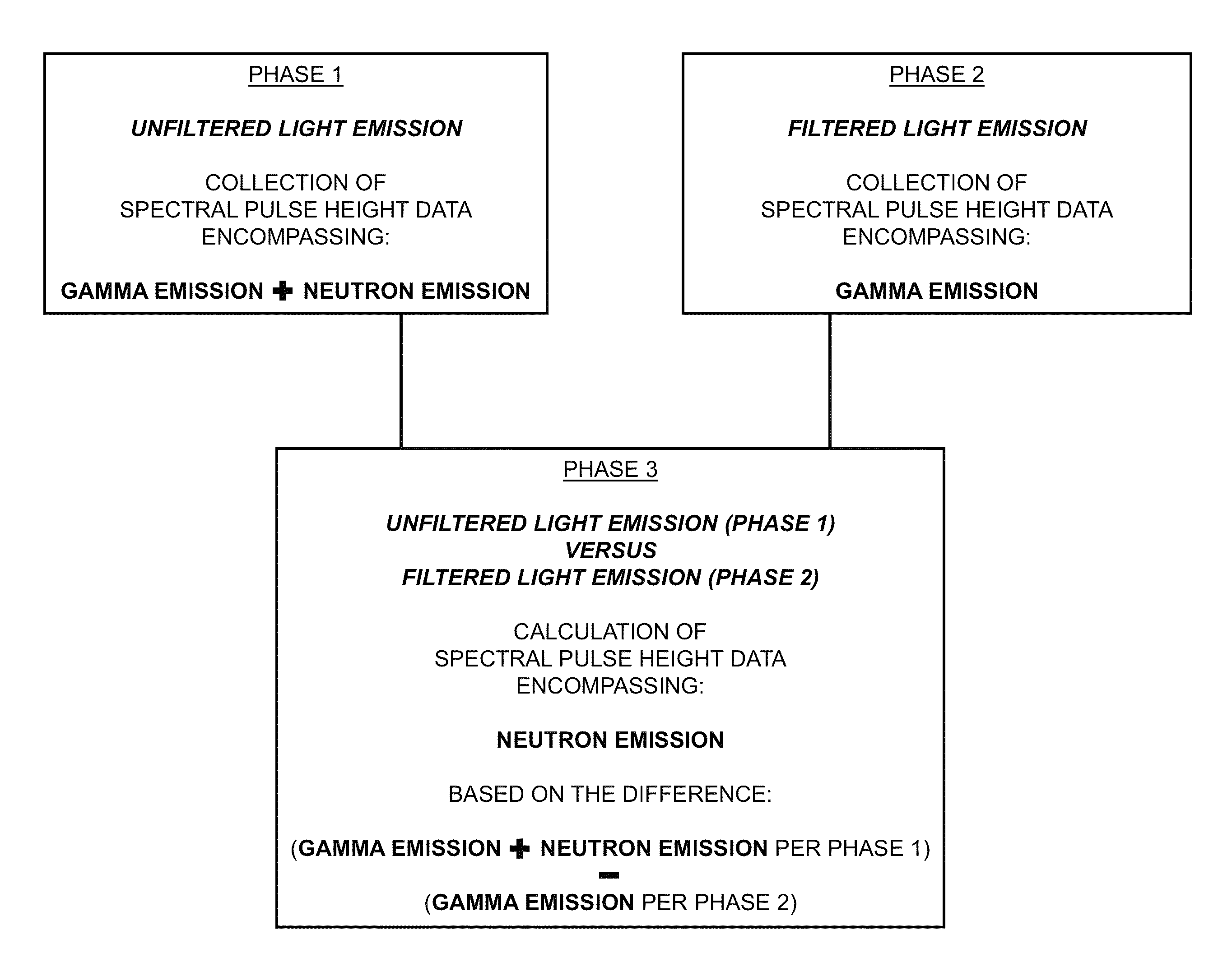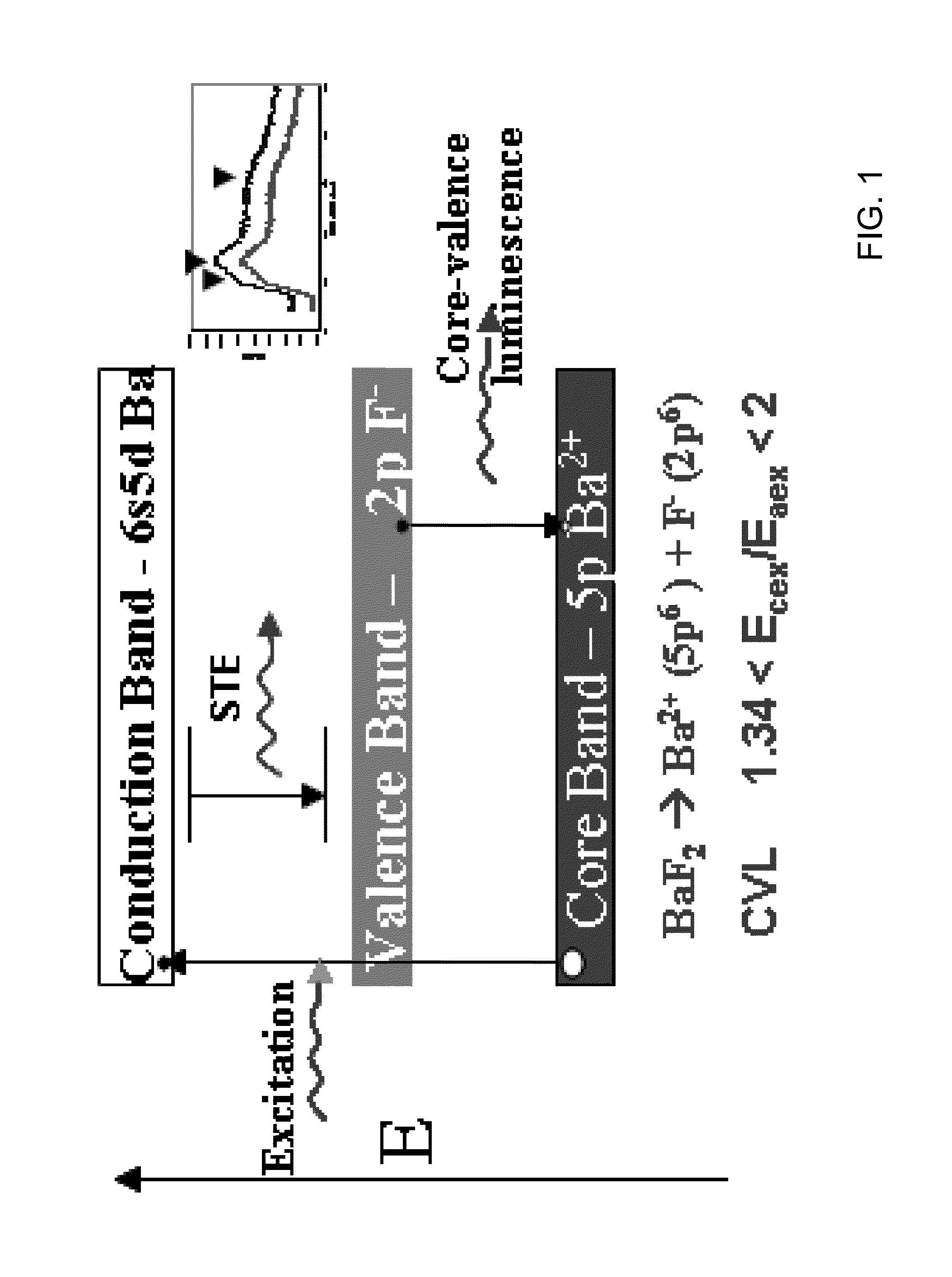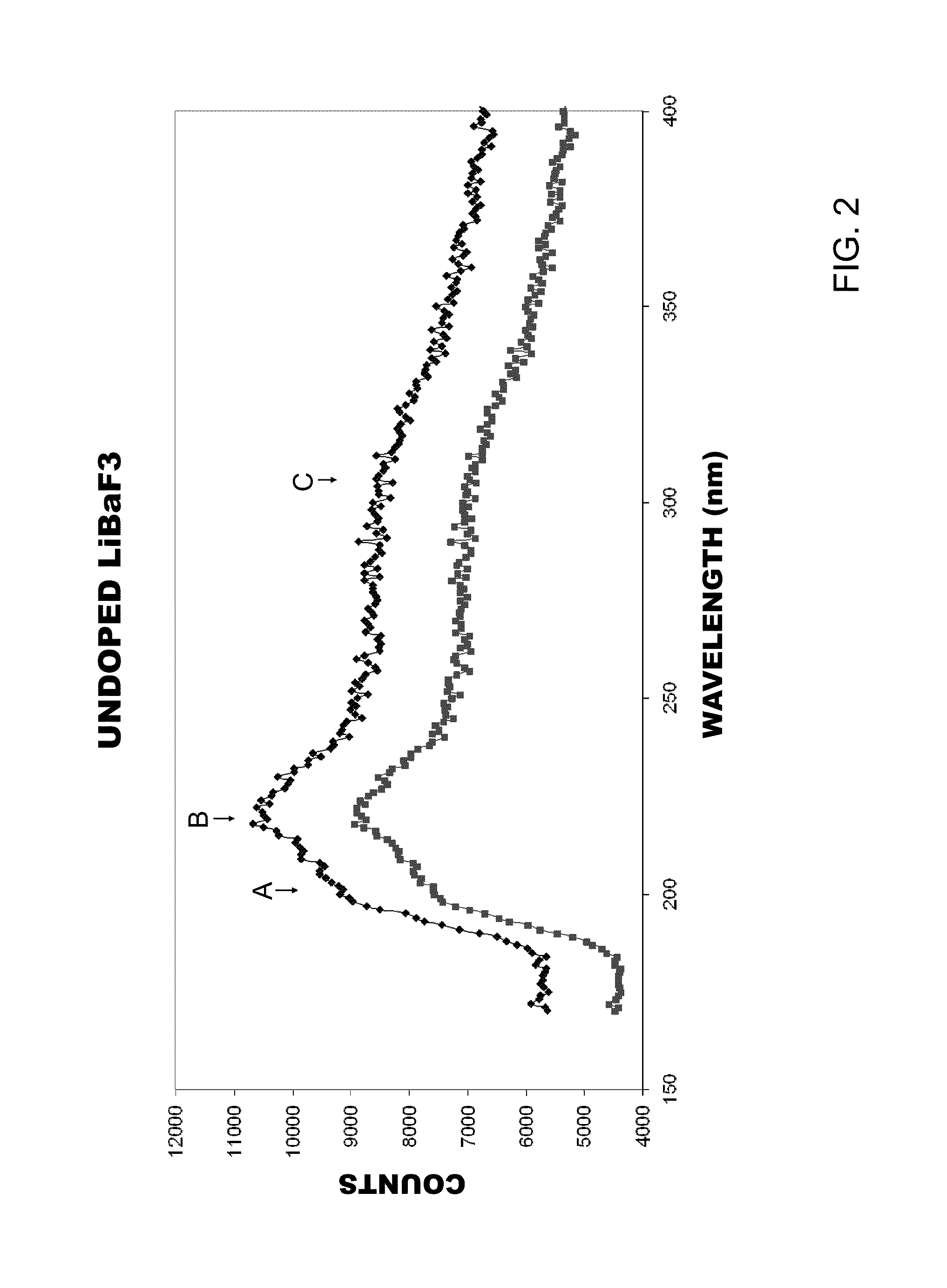Spectrally resolved pulse height analysis for neutron-gamma discrimination
a neutron-gamma discrimination and pulse-height spectrum technology, applied in the field of scintillators, can solve the problems of insufficient pulse-height spectrum to discriminate between gamma photons and neutrons, and most gamma-sensitive scintillators lack the capability to detect neutrons, so as to reduce the cost, size, and weight of the detection system, and the effect of less complicated
- Summary
- Abstract
- Description
- Claims
- Application Information
AI Technical Summary
Benefits of technology
Problems solved by technology
Method used
Image
Examples
Embodiment Construction
[0029]Referring now to FIG. 1, core-valence luminescence (CVL) arises when an electron from the valence band recombines with a hole in the first core band. Thus, the minimum energy required for the generation of CVL is the energy required to excite an electron from first core band to conduction band. On the other hand, the minimum energy required for forming the exciton is the energy required to excite an electron from valence band to conduction band.
[0030]High-energy photons are capable of exciting CVL, self-trapped exciton (STE), and impurity emissions. However, charged particles do not produce electron-hole pairs that are energetic enough to produce CVL. Thus, the charged particles produced by a neutron's interaction with the solid will not excite CVL, but there is sufficient energy in the electron-hole pair to produce STE emission. Accordingly, the spectral emissions under photon and neutron irradiation of a CVL scintillator have very different observed characteristics.
[0031]CVL...
PUM
 Login to View More
Login to View More Abstract
Description
Claims
Application Information
 Login to View More
Login to View More - R&D
- Intellectual Property
- Life Sciences
- Materials
- Tech Scout
- Unparalleled Data Quality
- Higher Quality Content
- 60% Fewer Hallucinations
Browse by: Latest US Patents, China's latest patents, Technical Efficacy Thesaurus, Application Domain, Technology Topic, Popular Technical Reports.
© 2025 PatSnap. All rights reserved.Legal|Privacy policy|Modern Slavery Act Transparency Statement|Sitemap|About US| Contact US: help@patsnap.com



